Summer 2017
I’m a native New Yorker and have lived in Brooklyn for the last 15 years. For most of that time, I’ve been with the guy who would become my husband. In the summer of 2017, we bought our first home.
Being in NYC, we saw many dark apartments during our hunt. When we first came across our rowhouse, I was able to see past the long list of critical improvements and focus on the bright OUTDOOR SPACE. I was immediately hooked.
I can’t say that I was thinking about gardening at this point. I was just enamored with the large yard (relatively speaking of course) and the direct, unobstructed sunlight.
Even if the yard looked like this...
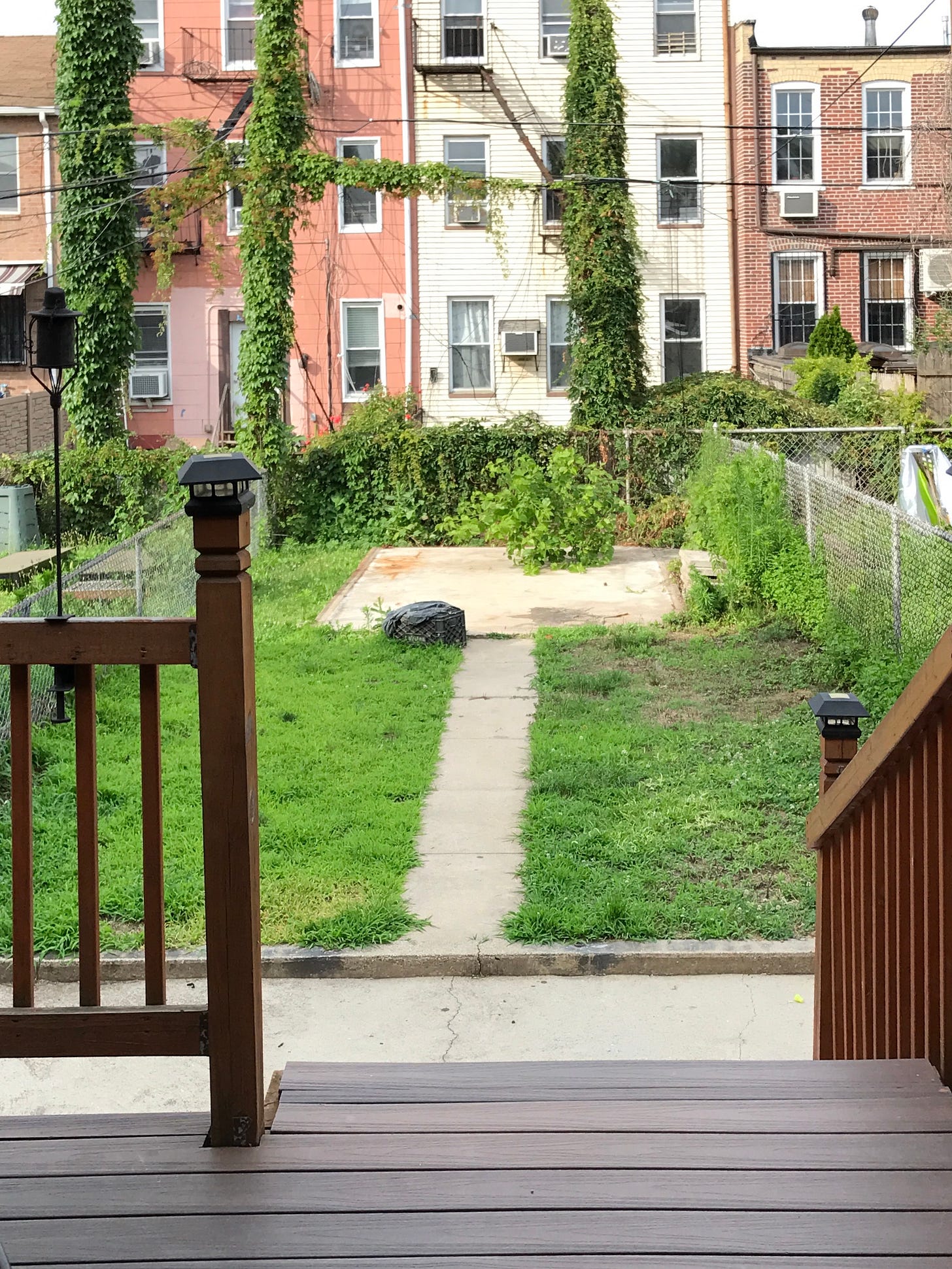
In our first summer here, we were distracted by the critical interior issues, e.g., heating, roofing, etc. We spent our weekends on the back patio plotting more improvements and staring at the yard. We were excited and overwhelmed.
If you look closely, you can see a milk crate that I tried to obstruct with the patio railing in this photo. This milk crate was full of heavy, set concrete that the prior owners had “gifted” us. In the middle of the yard.
I would spend way too much time pondering how to move that concrete through our house and out to the front curb.

This was also when I learned that plants could be invasive... I can thank the Virginia creeper for introducing me to the concept. It’s hard to ignore when it grows from a neighbor’s yard, across my back fence and up the length of the telephone poll.
Spring 2018
By the next spring, I decided to start PLANTING! I planted all sort of things for all sorts of reasons. Most of those initial plans have been reworked, but a few choices and lessons have become permanent. I’m going to focus on those here.
Climbing Roses
From the very beginning, I envisioned a wall of climbing roses at the end of the yard. My husband installed tall trellises to help provide some privacy, which the roses were intended to clamber over. Then we built raised garden beds for three climbing roses.
I’m embarrassed to say that I can’t remember why we built the raised beds... It was entirely unnecessary in my garden/soil and I would not suggest any new gardener go to this trouble. In fact, I have six other roses planted directly and successfully into the soil to prove my point.
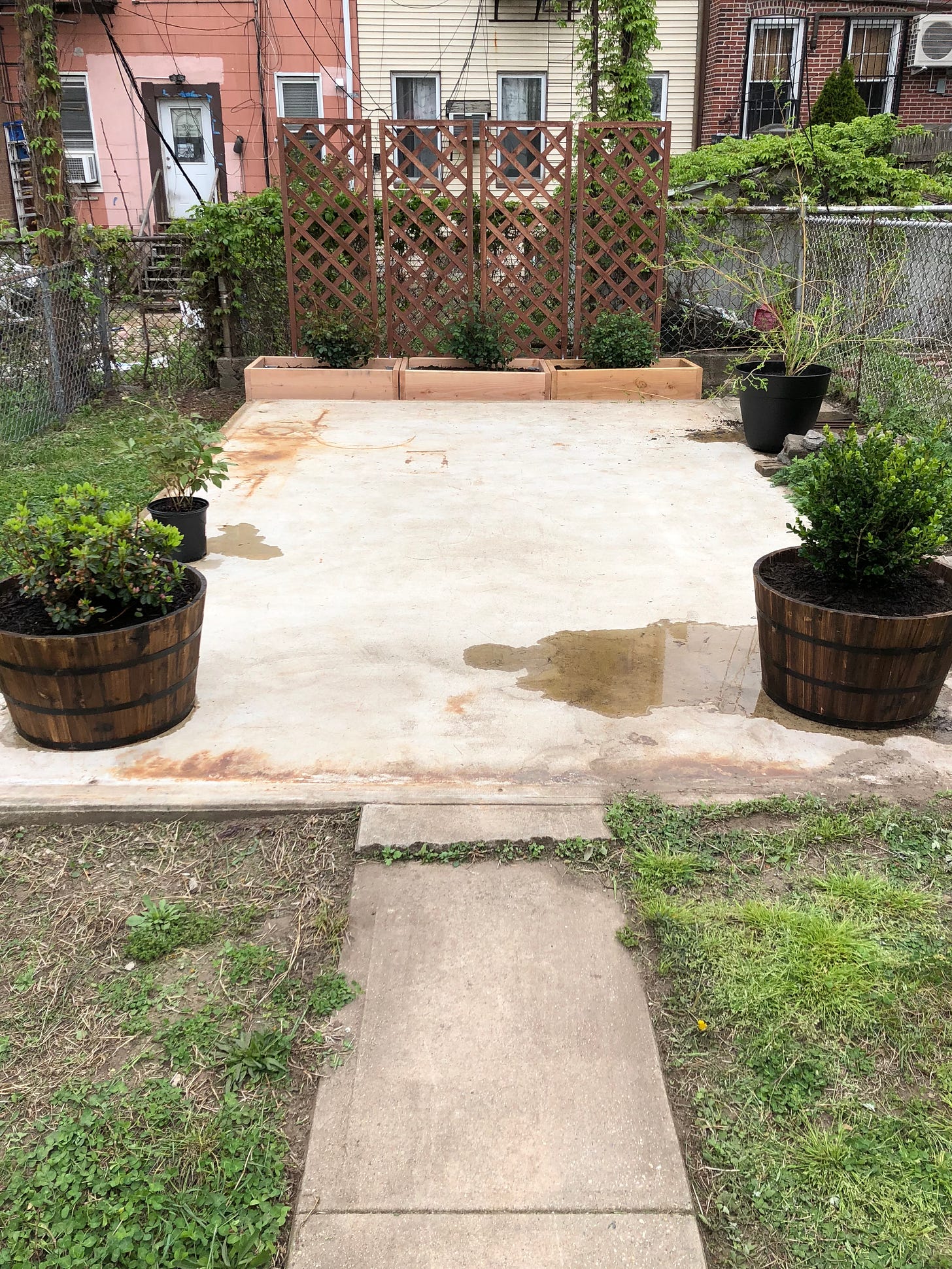
Over time, I would plant three climbers: a pink ‘New Dawn’ rose, a white ‘Cloud 10’ rose and a pale yellow ‘Claire Austin’ rose. I was focused on light-colored varieties that would rebloom over the summer. I still look for plants that rebloom because I want to maintain (some) flowers throughout the growing season.
In hindsight, I really didn’t need ALL three climbing roses. They are each vigorous, fast growers and I didn’t appreciate how large the plants would grow. One plant would have been enough!
While the three roses now beautifully cover the entire trellised wall, as you may have seen on my Instagram account, they will soon outgrow the area. Here they are today.
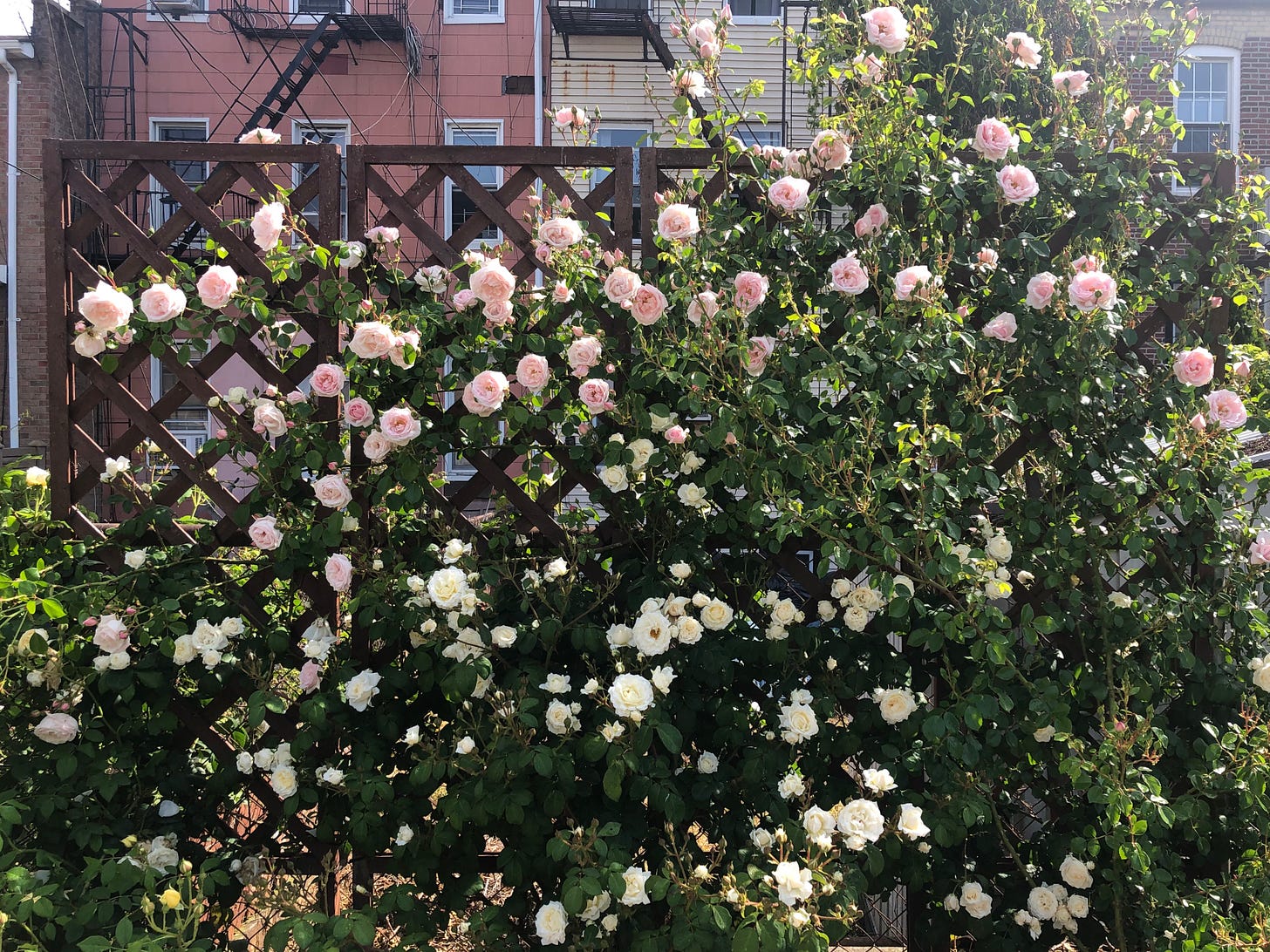
I’ll need to transplant the middle rose next spring to a new spot in the yard. Don’t ask where, because I’m not sure yet. But I’m lucky to have so much chain link fence available for the rose to clamber across...
Garden Path
Next, I removed the original concrete path. This is still the best thing I’ve done in the garden.
It cut the lawn in half and made the space appear long but even narrower than it was. I could not figure out how to plan an attractive flower bed in this type of space, despite lots of fun research and reading. Eventually, I realized that I could create separate areas, even in this small space, with carefully planted layers. (I will explain more in a bit.)
But first, the central path had to go.
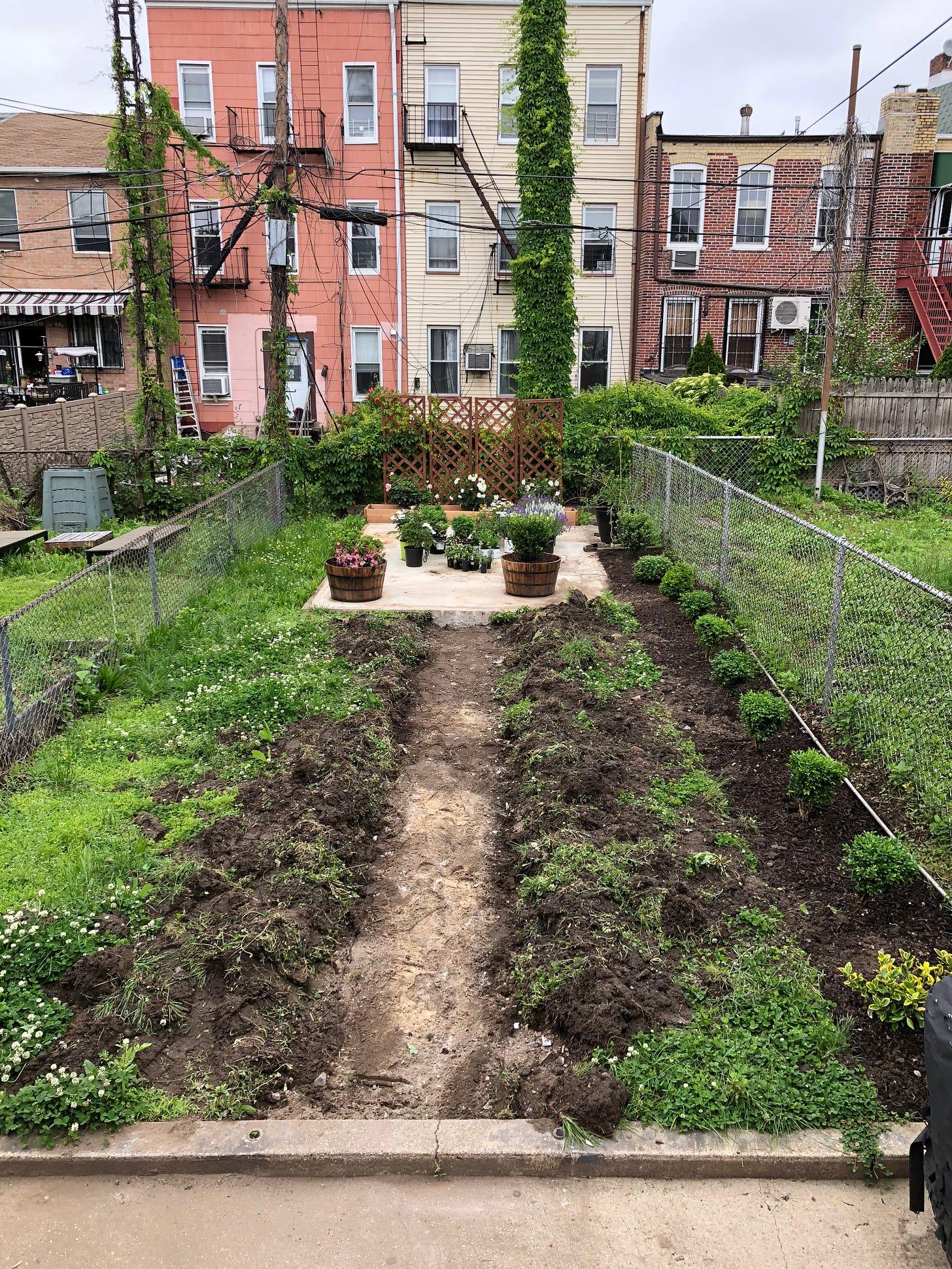
I decided to add a curved path to the garden. It was mostly a gut decision at the time. Now, I can speak about this a bit more confidently and why it’s remained a permanent part of the garden.
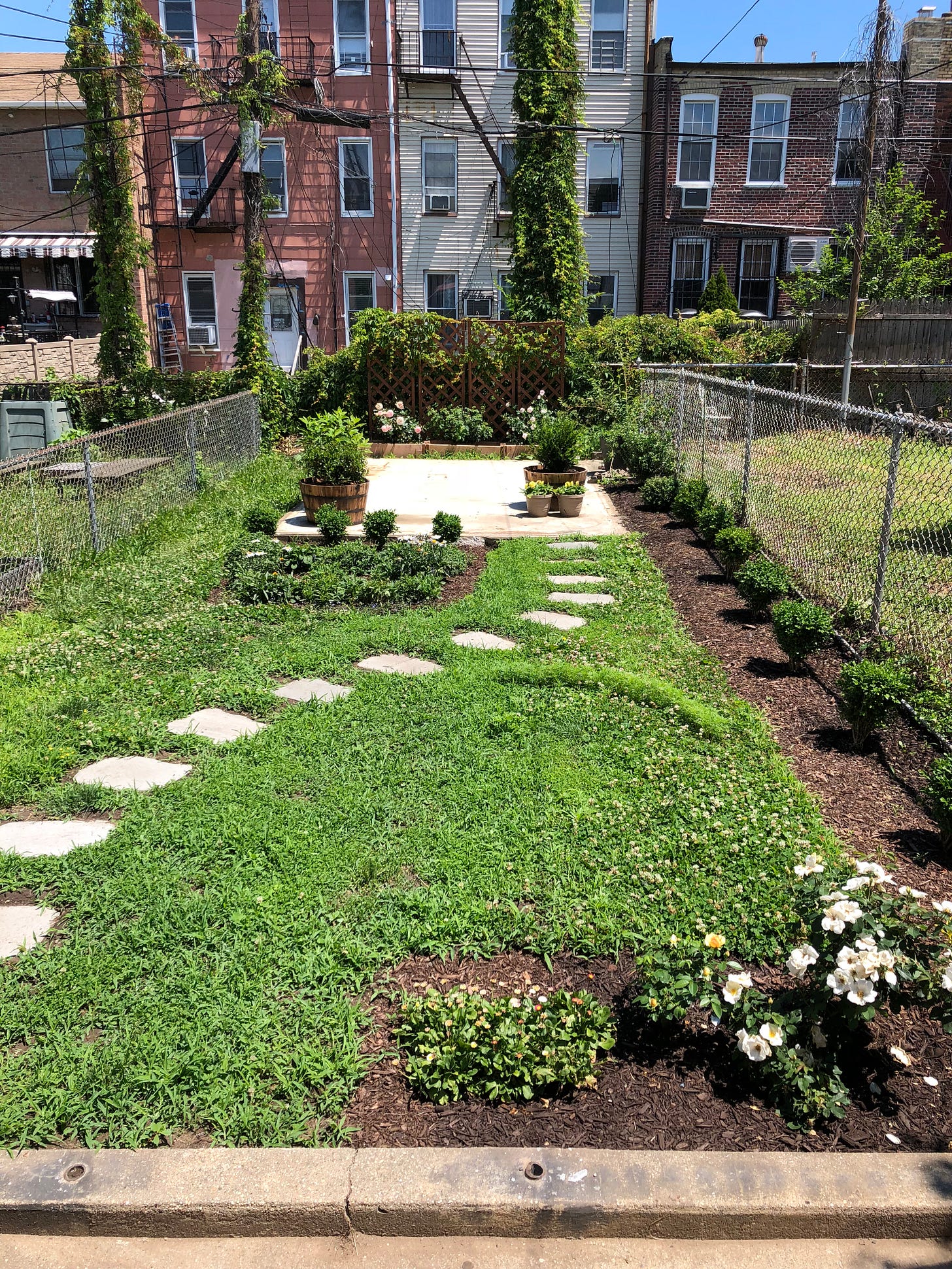
The curves allowed me to create deep garden beds that extend into the middle of the garden. This makes the front and back garden beds seem to overlap in the middle, exaggerating the size of each planting area.
Now, in my more established garden, the front (right) bed creates the first layer of plants and even conceals the path and rear bed in places. This planting scheme encourages me and my visitors to enter the garden and get a closer look at the plants that we would otherwise miss in the rear bed.
Yes, there are folks who have no interest and need to be encouraged to enter the garden!
Lilac Tree
I’ve been very grateful for my husband’s support and patience in building the garden. So when he reminisced about lilacs in the Midwest, I jumped at the opportunity to incorporate a plant that was special to him.
Around this time, I started to develop my concept of “gardening through time” as I call it now. It’s really just the age-old advice to consider your garden across seasons.
I wanted a lilac but they only bloom for a week or two, before transforming into a dull shrub for the rest of the season. (That’s fair to say, right?) With my very small garden, I didn’t want to sacrifice precious real estate for a plant that would only inspire for two out of fifty-two weeks of the year.
So to extend the appeal of my lilac, I settled on a reblooming variety in tree form.
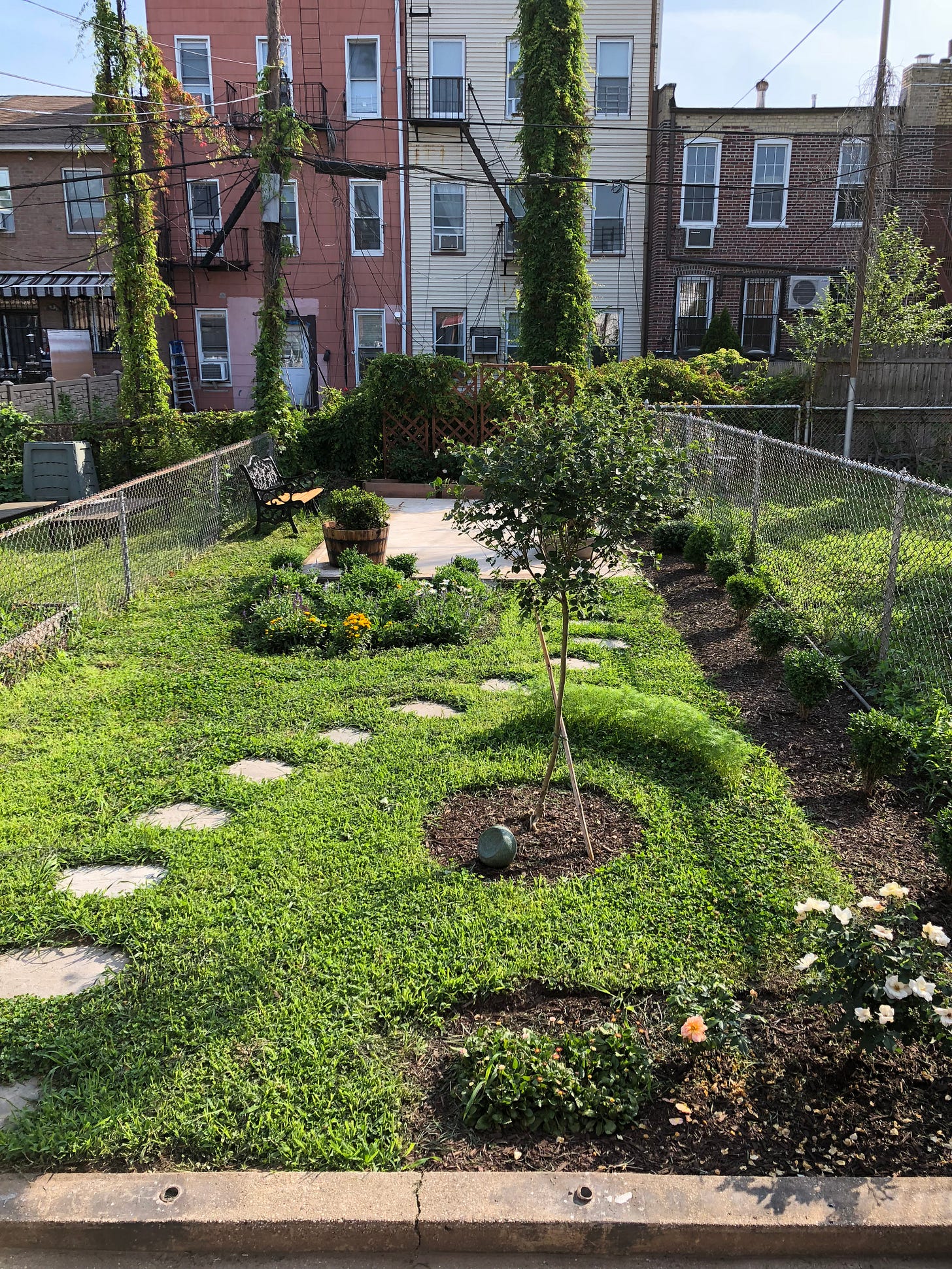
I’ll admit, I haven’t had much luck coaxing a second bloom yet... but the plant is young. Last year I trimmed the branches right after they finished blooming in the spring. I think that was a mistake because I’ve since read that trimming could delay a possible second bloom. This year, I’m taking the lazy approach and hope my inaction (i.e., no unnecessary trimming) will bear mid summer blooms.
This what it looked like earlier this spring. (You can see why I’m eager for it to rebloom…)
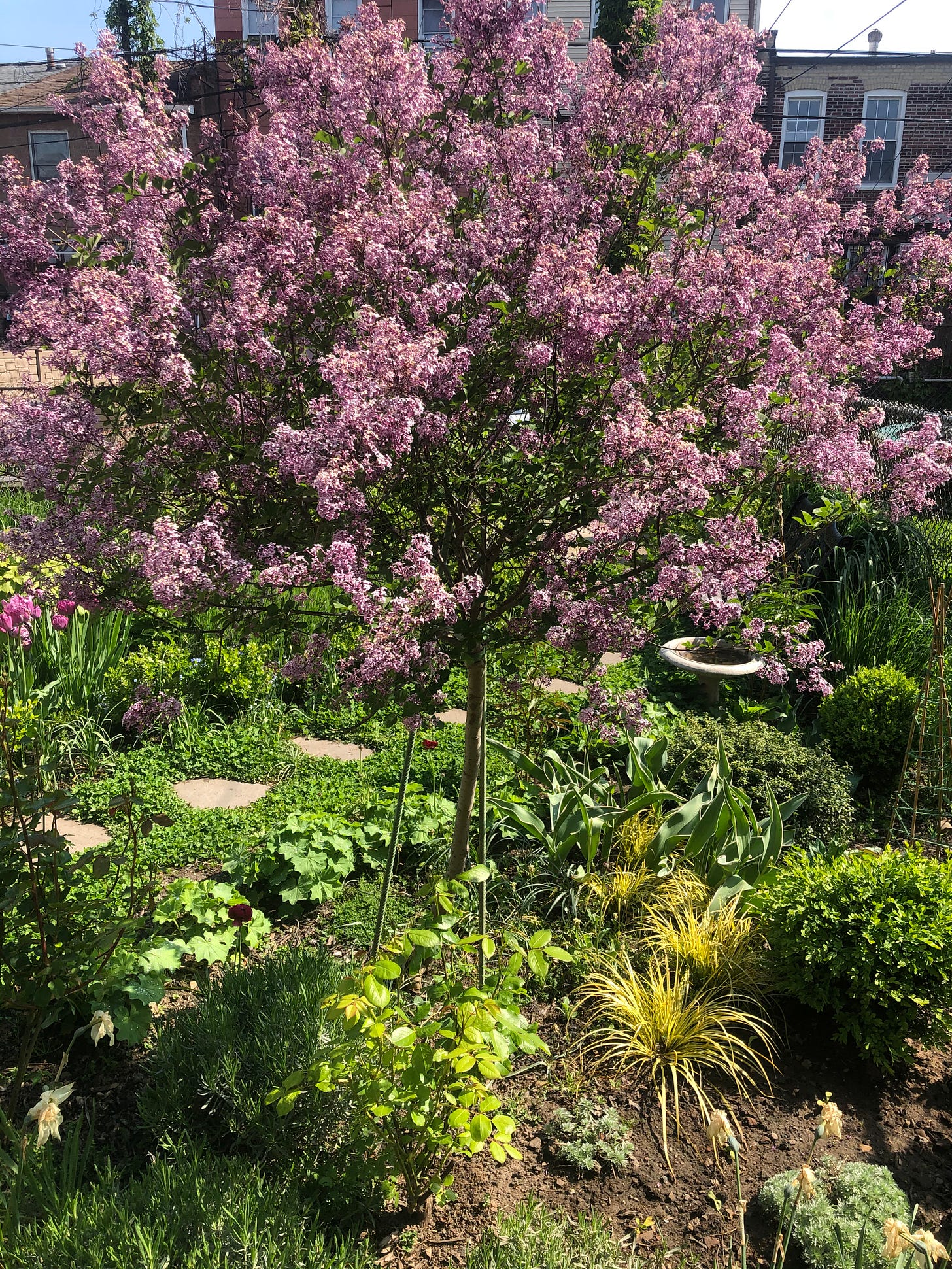
I believe the tree form aspect has been a bit more successful. The “tree” is an interesting anchor in the front border and it’s part of my layered planting scheme to hide the back areas a bit. (Again, if you want to see the plants in the back, you’re just going to have to enter the garden to take a look. And I’m happy to be your guide.)
I don’t expect the “tree” to grow much more in height because it’s only a shrub grafted onto a trunk. But lilacs are very rigorous plants, so perhaps I’ll be proved wrong over the next few years.
Cottage-Style Planting
The most lasting development from this period was an appreciation for wild flowers and a free-spirited, cottage garden approach to planting. Among my first plants were salvias, cosmos and daisies. They were unintentionally smashed together because I didn’t know better. (See the section about my planting too many climbing roses.)

By mid summer, my tidy yard had grown a bit more wild and something clicked inside me... I think this is when I really became a gardener.
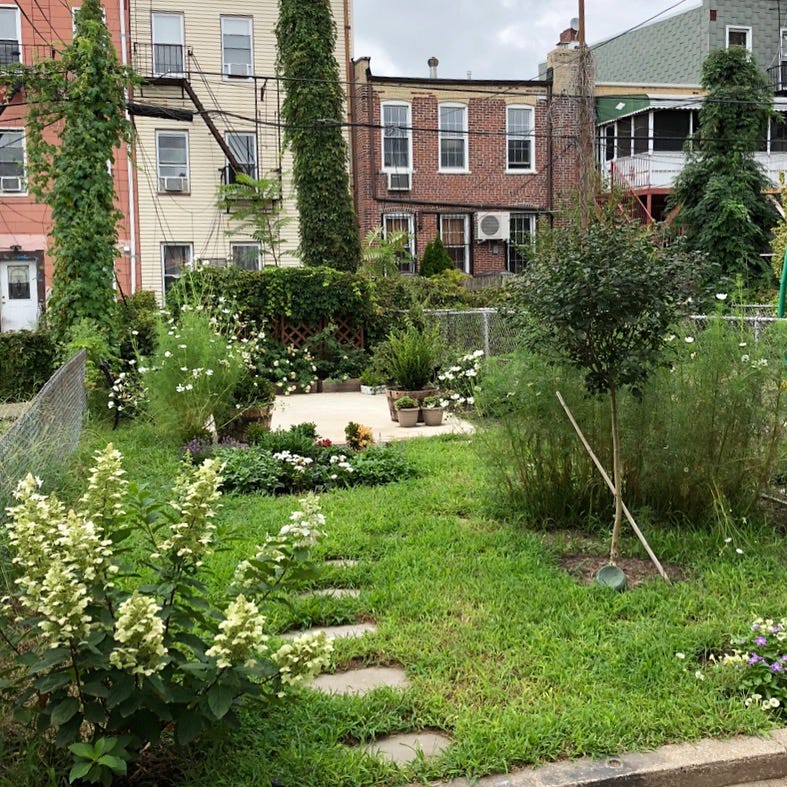
Thank you for reading. I’ll continue next week if there’s interest... Please consider subscribing so you don’t miss anything. Every update will then be emailed directly to you.
And please don’t be shy. Send me your feedback and know that I appreciate your time and attention!




This is so inspiring! I totally know what you mean by not needing all the roses, but not knowing any better. I REALLY didn’t need 9 (yes, nine) David Austin roses either, in hindsight I would have probably been happier with just 2 or 3 in my tiny space...
Your garden is super beautiful and interesting and inspiring! I can’t wait to read more.
- Maarika
I love the lilac tree, what’s the variety you have? I also think it looks so beautiful with the 3 roses blooming together. New Dawn is one of my favorite climbing ones. I like the pale pink mixed with the yellow and white you picked. Are you moving the white or the yellow one?